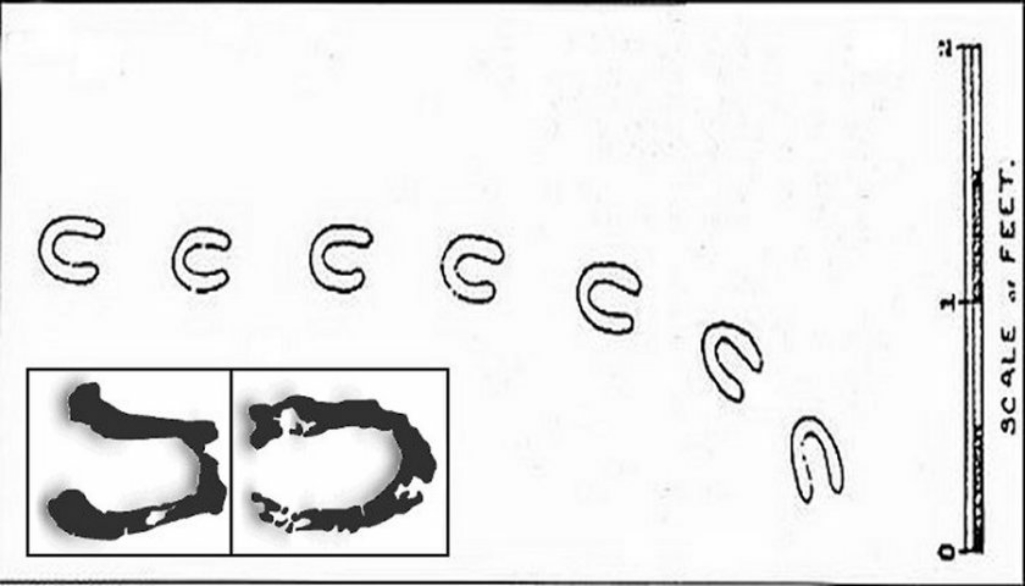On the night of the 8th of February 1855, heavy snowfall blanketed the countryside and small villages of Southern Devon. The last snow is thought to have fallen around midnight, and between this time and around 6.00 am the following morning, something (or somethings) left a myriad of tracks in the snow, stretching for a hundred miles or more, from the River Exe, to Totnes on the River Dart.

The early risers were the first to find them, strange hoof-shaped prints in straight lines, passing over rooftops, through walls and covering huge areas of land. A set of the prints were even supposed to have bridged a two-mile span of the river Exe, continuing on the other side as if the creature had walked over the water.

It soon became clear that the phenomenon was widespread, and some of the more scientifically minded examined the prints in detail. One naturalist sketched some of the marks, and measured the distance between them, it was found to be eight and a half inches. This spacing seemed to be consistent wherever the tracks were measured. It was also noted that the way in which they were set out, one in front of the other, suggested a biped rather than a creature walking on four legs.
Some clergymen suggested that the prints belonged to the Devil, who was roaming the countryside in search of sinners ― a great ploy to fill the churches, while others rejected the idea as superstition. It is true that a feeling of unease had spread through some of the population, who watched carefully to see if the strange footprints would return. They did not and after a couple of days, the news spread out of Devon and made the national press.
The phenomena sparked correspondence in some of the leading papers including the Times and the Illustrated news. This brought more accounts to light, and led to a plethora of speculation by eminent scientists and laymen alike.
It seems that most of the Southern villages of Devon, from Totnes to Topsham, had been inundated with the prints in all manner of absurdities. Some stopped abruptly and continued after a large break, others stopped at walls as high as 14 feet, only to continue on the other side, leaving untouched snow on the top of the wall. Some were even said to have travelled through narrow apertures such as drainpipes.
The papers picked up that some kangaroos had escaped from a private Zoo belonging to a Mr. Fische at Sidmouth, but the track’s description bears no resemblance to the tracks a kangaroo would leave. Sir Richard Owen, the eminent Biologist, suggested that the tracks were made by badgers, roaming the countryside in search of food. He explained the strange shape of the prints as the result of freeze-thaw action.
This explanation only holds as much ground as the other theories given at the time, these included roaming raccoons, rats, swans, otters and the theory that a hot air balloon passed overhead trailing a rope. These could explain some of the tracks made that night, but certainly not all of them, unless all of the above were to blame in separate occurrences.
There are similar scattered cases from other parts of the world and also one written account in Britain. According to Ralph of Coggeshall, a writer from the 13th Century — who also recorded strange arial phenomena during his era — on the 19th of July 1205, strange hoof prints appeared after a violent electrical storm. In mid-July, these tracks would only be visible in the soft earth, and the electrical storm suggests some kind of natural phenomenon as yet unknown.
The Devil’s Footprints remain an intriguing mystery that will only truly be solved if the phenomenon happens again and can be examined more closely and precisely.



